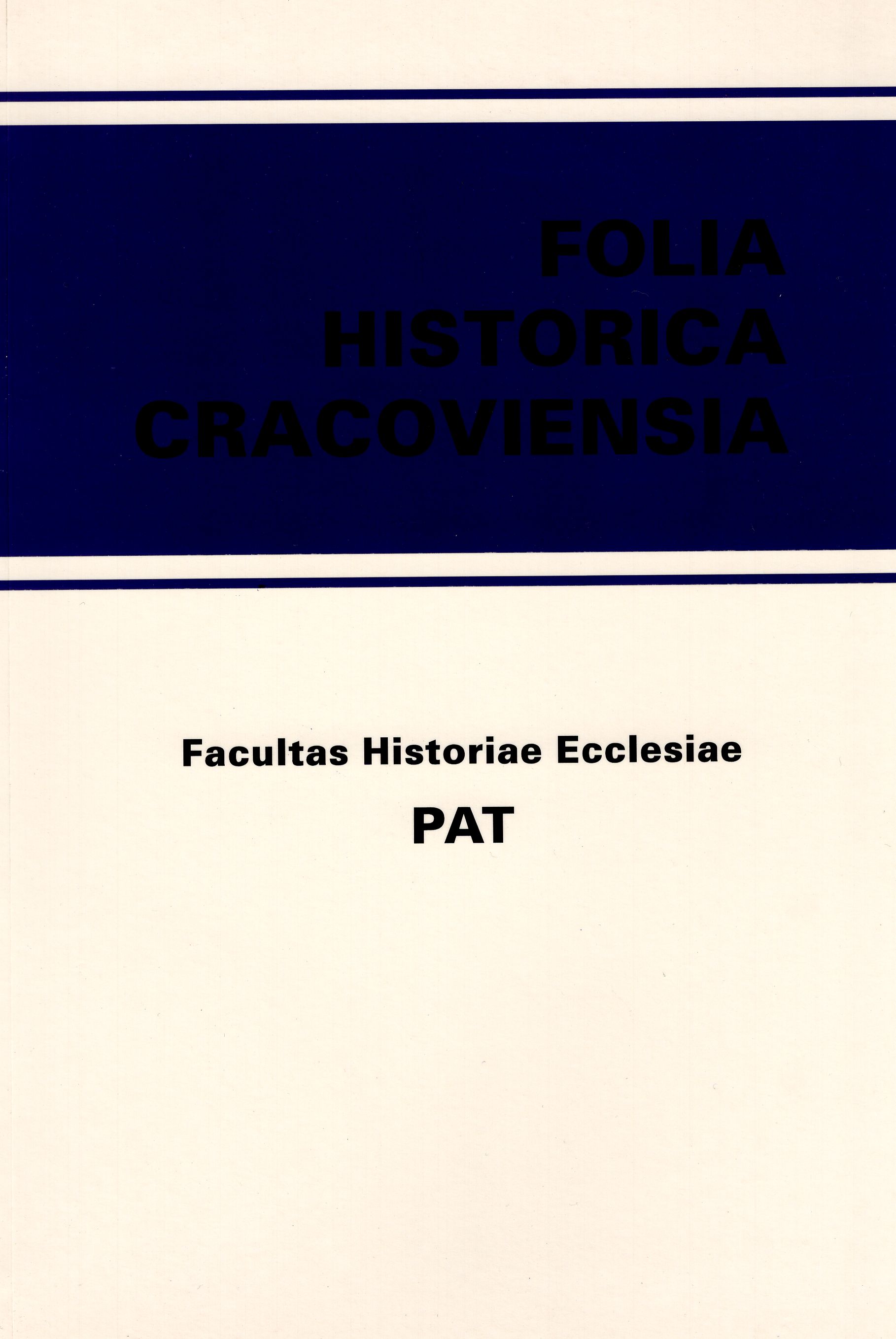Schody na Skałkę. Z zagadnień ikonografii męczeństwa św. Stanisława Biskupa
Stairs to Skałka. From Iconography of Martyrdom of Bishop Stanislaus
Author(s): Tomasz WęcławowiczSubject(s): History of Religion, History of Art
Published by: Wydawnictwo Naukowe Uniwersytetu Papieskiego Jana Pawła II w Krakowie
Keywords: iconography; church „na Skałce”; saint; martyr; bishop;Stanisław ze Szczepanowa;
Summary/Abstract: For over one hundred years research discussions have revolved around two issues: was Skałka really the site of the martyrdom of bishop Stanislaus, and, what was the church like in its medieval phases: the alleged, pre-Romanesque phase and, confirmedby sources, the Gothic foundation of Casimir the Great. An argument over the site of the martyrdom will turn out to be unimportant if it is considered in two different meanings, two different orders of interpretation. In the historiographic meaning, bishop Stanislaus might have been killed on the Wawel hill, while in the hagiographic meaning, the martyrdom must have taken place on the site called Skałka, outside the town and the Vistula river, in a distant sanctuary of Archangel Gabriel. The latter of the aforementioned research questions - what was the church “NaSkałce’ like in the Middle Ages - was put at the end of the 19th century by Władysław Łuszczkiewicz. In an answer, he presented the churches imagined in the scenes of the Martyrdom of St. Stanislaus in triptychs from St. Mary’s church in Cracow and froma church at Pławno. He understood them as realistic views of Skałka at the beginning of the 16th century A survey of a broad material shows, however, that in the late medieval iconography of St. Stanislaus at least two architectural types of the church which is the background of the Martyrdom scene can be distinguished at the beginning of the 16th century. The question what Skałka was like in reality is a wrong question then and must be left unanswered. The right question is: why was the architectural background of the Martyrdom scene depicted in such different ways, and, was this architecture in its iconographic design really meant to show only the Gothic church ‘Na Skałce’. With varied realisations of details of the church itself, the common motives of all depictions of Skałka are: walls surrounding the hill, gates built in them - one, two or three, always open and flights of stairs or ladders leading to the gates from the site where the hired assassins mutilate the body of the Saint. Moreover, nearly in every depiction figures can be seen mounting the stairs towards the open gates. These figures as well as stairs or ladders or gates are not to be found in the texts of The Life o f the Saint because painted and graphic renderings have primarily moralizing aim. The archetype of ‘the stairs to Heaven’ is substantiated in the iconography of the Martyrdom as stairs to the church on Skałka.The interpretation of the stairs to Skałka can therefore be resented as follows: L i t e r a l l y , stairs to the gates are indeed stairs leading to the church ‘Na Skałce’. I n a n a l l e g o r i c a l interpretation, they are the Cross of Christ, who enabled thefaithful to ascend to Redemption. A typological unity of steps on Jacob’s ladder and the Cross of Christ has frequently been raised in exegesis, and St. Stanislaus appears here, like every martyr, as alter Christus. In a t r o p o l o g i c a l interpretation, ascending stairs indicate aspiring towards perfection through mounting the steps of deeds. I n a n a n a g o g i c interpretation, these stairs lead to the gates of heavenly Jerusalem.
Journal: Folia Historica Cracoviensia
- Issue Year: 9/2003
- Issue No: 1
- Page Range: 263-278
- Page Count: 15
- Language: Polish

